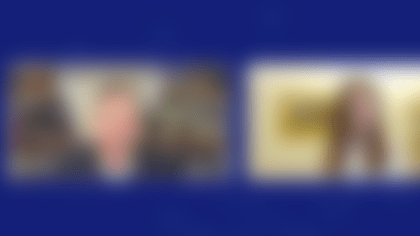The NFL released its most recent injury data on January 26, 2017, in the days leading up to Super Bowl LI. The injury data is compiled and analyzed by IQVIA (formerly Quintiles), an independent third-party company retained by the NFL.
The injury data includes statistics on a broad range of injuries including numbers from 2012 – 2016 for the incidence of reported concussions in the preseason and the regular season. NFL medical experts analyze the data to consider how protocols and rules changes are making an impact on player safety.
Below are the key takeaways from the media conference call to discuss the 2016 injury data.
1. TOP LINE 2016 INJURY DATA
Jeff Miller, the NFL's Executive Vice President of Health and Safety Policy, outlined the key points from the 2016 data (also available here):
In 2016, reported concussions sustained during NFL regular season games decreased 8.7 percent, from 183 to 167.
The number of total reported concussions, including those sustained during preseason practices and games as well as regular season practices and games, decreased 11.3 percent in 2016, from 275 to 244.
The number of total reported concussions, 244, is aligned with the five-year average.
2. IMPORTANT SAFETY ANALYSIS AT THE NFL COMBINE
The week-long NFL Combine is held each spring at Lucas Oil Stadium in Indianapolis. More than 300 NFL prospects participated in the 2017 Combine, attended by team coaches, managers and scouts.
Also in attendance are team physicians, team athletic trainers, medical advisors and committees, NFL Players Association representatives and others. For those individuals and groups, the Combine is an opportunity to gather for the first of several meetings throughout the year to examine player health and safety.
Medical advisors and committees analyze injury data from the previous season, discuss statistical trends, identify outliers in the data, debate reasons for the numbers and ask important questions that need further analysis and reporting. These discussions last long after the annual Combine in Indianapolis and lead to a year-long effort to make the game safer.
Jeff Miller explained how the Combine is a vital opportunity to evaluate player health and safety.
Dr. Mitch Berger, Professor and Chairman of the Department of Neurological Surgery at UCSF and a member of the NFL's Head, Neck, and Spine Committee, said this season's injury data makes the analysis at the NFL Combine "one of our absolute highest priorities":
"I was encouraged that the numbers are down, but I'm still far from satisfied. As a health care provider, I think one of our absolute highest priorities is to get these numbers further down. We're going to have to really think about the ways in which we can do this. I think as Jeff just said, that's what the Combine is about. We've got to drill down into the Quintiles numbers and work with the medical community to find out how we can decrease the numbers."
NOTE: QuintilesIMS is an independent company that leads the NFL's surveillance and analytics of injuries.
3. SIGNS OF A CHANGING CULTURE
Dr. Robert Heyer, the President of the NFL Physicians Society and Team Internist for the Carolina Panthers said he's seen a culture change:
"I've been a team physician for 22 years, and during the past three years I think I've seen a cultural change concerning concussions. The players are now more aware of the symptoms of concussions and are concerned for their health. As a result of this ongoing education, players are more likely to speak up if they believe they have a concussion. And this awareness has led to more self‑reporting of symptoms by players and then an appropriate medical evaluation by the team physician and UNC (Unaffiliated Neurotrauma Specialist)."
Dr. John York, Co-Chairman of the San Francisco 49ers and Chairman of the NFL Owners' Health and Safety Advisory Committee, said self-reported concussions are on the rise:
"We've also seen an increased number of self‑reported concussions this year over last year, with last year being the first year that we really saw a significant number of self‑reported concussions. So those are all good changes with regards to the concussion protocol, and I would also say that they have an effect that may cause an increase in the number of concussions that we identify."
Dr. Robert Heyer explained that self-reported concussions have a direct impact on a player's ultimate recovery:
"The self‑reporting of concussions by players is important in terms of their ultimate recovery. If a player spends an extra quarter or even a game on the field with a concussion, it lengthens the amount of time required for them to return to their normal baseline state."












